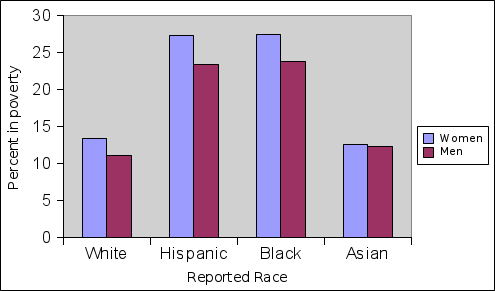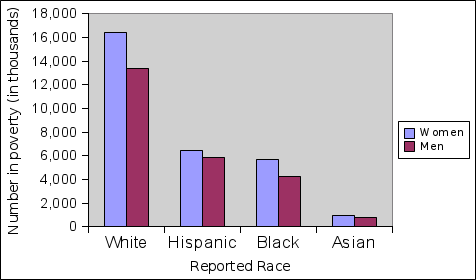I wrote previously about the difficulties of handling class within identitarian frameworks. I called out two main problems. First, poor people do not identify together as a coherent group. Second, to the extent that poorness is an identity, it is one we are trying to eliminate, not empower. Lifting up poor voices and experiences is all well and good in the meantime, but ideally there would not be any such voices or experiences to lift up at all. As far as I can tell, there is no other identity group for whom justice requires total annihilation.
Those theoretical points aside, I have also noticed that class is often dealt with in very strange ways by proponents of these frameworks. For instance, proponents often conflate poor people with people of color, believing somehow that racial justice captures class issues. They seem to think poverty is something that primarily affects Black people or people of color in general. Using racial poverty data, they note that Black and Hispanic people have much higher rates of poverty than Whites or Asians.

The above 2009 Census data definitely backs up that claim. Self-identified Black and Hispanic people are disproportionately poor. That reality reflects all sorts of problems within society, including present-day racism and the residual impacts of historical racism. Racial poverty percentages can only tell you so much about class however. When we look at raw poverty numbers, a different picture emerges.

Self-identified Whites (which overlaps with Hispanic Whites who check both boxes) constitute the majority of impoverished people in the United States as measured by the federal poverty line. When you talk about poor people as a class, you are talking about a class that is still majority White. The racial complexion of that group is less white than the population as a whole, but that point is only really relevant as an indicator of racial injustice. A poor white is still poor even if a smaller percentage of his racial cohorts are also poor.
For whatever reason, it is very tempting to not think of White people as poor people. Many seem to mentally embed poorness only into the experiences of people of color. In doing so, they mentally categorize “White” as non-poor, meaning that identifying someone as “White” also implies that they are doing well economically. This tendency fails to appreciate that class issues and poverty do actually intersect with whiteness, at least for nearly 30 million self-identified Whites.
The failure to make this intersectional connection has led to the adoption of a rather lazy placeholder for the paragon of oppression and privilege: the straight white male, or these days the cis straight white male. It’s an interesting choice for the default placeholder for a variety of reasons, but the one I want to focus on here is the way it leaves out class. According to the 2010 Census supplemental poverty measurement, around 100 million Americans are either in poverty or near poverty (within 50% of the poverty line).
These 100 million people are complex beings with all sorts of issues, but I suspect that for a great number of them, class issues feature very prominently in their lives. These people are doubtlessly concerned with economic security, food security, retirement security, health insurance, and so on. When we casually use “cis straight white male” as the placeholder of the oppressor and the privileged, do we really think that speaks to their primary concerns? At minimum, that kind of mentality almost certainly does not speak to the nearly 13.5 million poor white men, most of whom presumably identify as cis and straight.
The tendency to rely on the “cis straight white male” placeholder reveals just how far away we have moved from economic and material concerns, and just how far we have to go to achieve a truly intersectional analysis. From the late 19th century to the mid 20th century, economic issues were at the absolute center of left thought and analysis. That single-minded emphasis was wrong, and was rightly pushed back and supplemented with other co-equal concerns (e.g. race, gender, and sexuality). Recently however, it seems as if class issues — although nominally included in intersectional analysis — have been pushed almost totally to the margin. That is a big problem, both theoretically and practically, for a radical left interested in widespread success.